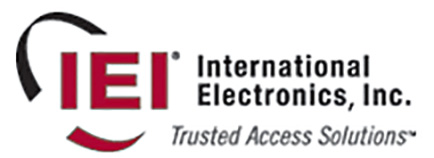Mechanical vs. Electronic Access Control: Which is Better?
Most business owners recognize that mechanical access control systems are no longer enough to secure a perimeter. However, not all doors have to be controlled entrances, and it is not always necessary to have 24-hour monitoring. Thankfully, secure and reliable electronic access controls do not have to be complex to be effective. Moving from mechanical to electronic systems can offer many benefits, including higher security, a lower risk of credential duplication, and the simplicity of reprogramming locks rather than rekeying them. In this guide, readers will learn about the differences between mechanical vs electronic security systems.
Types of Access Controls
There are two types of EACs (electronic access controls): networked and offline. An offline system, as its name implies, is not connected to a network; it's sometimes referred to as a standalone system. Offline EACs are most often envisioned as having electronic locks that receive programming via a keypad or a handheld device. In offline systems, locks don't communicate but, in other ways, they work in much the same way as other electronic access controls do, with PIN or credential authentication to allow access and provide an audit trail.
Networked EACs are becoming increasingly common in today's secure business environments. A networked EAC is a system in which an access device is connected to a hardwired or wireless network. These systems may be as simple as a group of a few electronic locks, or they may be highly sophisticated, integrated systems that combine access control, digital video, and cameras with badging and alarm monitoring.
Making the Switch From Mechanical to Electronic Access Controls
- Mechanical access controls represent a fundamental way to prevent free ingress and egress through openings in a commercial building. They include keyed locks and other products that provide affordable, dependable security. With such basic devices, security concerns are focused primarily on protection from risks such as vandalism and theft, and upon providing physical barriers to intrusion. Mechanical locks are appropriate in places that do not require constant monitoring or an audit trail.
- Standalone and offline EAC devices may be individually programmed to permit access by various users based on a business' unique requirements, such as the day of the week or the time of the day, and they require a user's credentials for free access. Typically, these locks are powered by batteries, and they are programmed with a keypad or a personal handheld device that programs the lock with a user's predetermined settings. Business owners can choose from a few credential types, such as magnetic stripe, PIN, smart cards, and proximity cards. Offline locks provide audit trails, so business owners will know when someone has accessed a lock and who has done it. These security solutions are ideal starting points for business owners who want to shift to EAC because they are cheaper to install and maintain than networked solutions.
- Networked, or online, EAC setups are connected to central systems business owners can use to manage schedules and users, modify credential rights, and much more. Such systems can be run online or via software installed on a corporate network. Readers and locks are linked to a network either through a wireless or hardwired connection, and business owners can select devices with credential types including magnetic stripe, PIN, or smart and proximity cards. Lock data changes are quickly and easily made from a singular access point because all locks are network-connected. Reports can be obtained from the software for easy, quick auditing and information gathering.
While not all businesses have the financial wherewithal to implement a networked solution, they do offer unmatched simplicity and convenience. Just as there are different secured system levels, the credential method a business owner chooses can affect the system and employees' personal information.
Biometric Systems
A biometric system offers the topmost level of security because it does not require physical credentials for identification purposes. Rather, they identify employees by using their unique biometric info such as fingerprints and hand geometry. For additional safety, along with the biometric info, a user may be asked to present a PIN or a credential to gain access to a secured area.
Smart Card Systems
A system using the smart card credential offers a higher level of safety. A smart card exchanges information with a reader via the mutual authentication process. It provides additional reassurance and ensures the integrity of communication between the credential and the reader.
Proximity and Magnetic Stripe Credentials
In today's secure business environments, proximity credentials are the standard way to control access. They are simple to use for cardholders and system administrators. Magnetic credentials are the perfect choice when a business owner must store unique info on every credential and they need write/read capabilities.
PIN Codes and Keys
A PIN code is the simplest credential type used in today's electronic applications. Users only have to recall a three- to eight-digit code to access secured areas. Because such codes are easily disseminated to other parties, using PIN codes alone is not the best approach. Key credentials have long been an industry standard. While these keys do offer heightened safety, the risk of stolen and lost keys or unauthorized duplication can lead to reduced productivity and extra work.
While keeping commercial buildings secure is often a difficult task, improved safety can begin with a needs assessment by a qualified local consultant. These professionals can help business owners plan their migration from mechanical to modern electronic access control in a way that suits the building, company, budget, and schedule.







